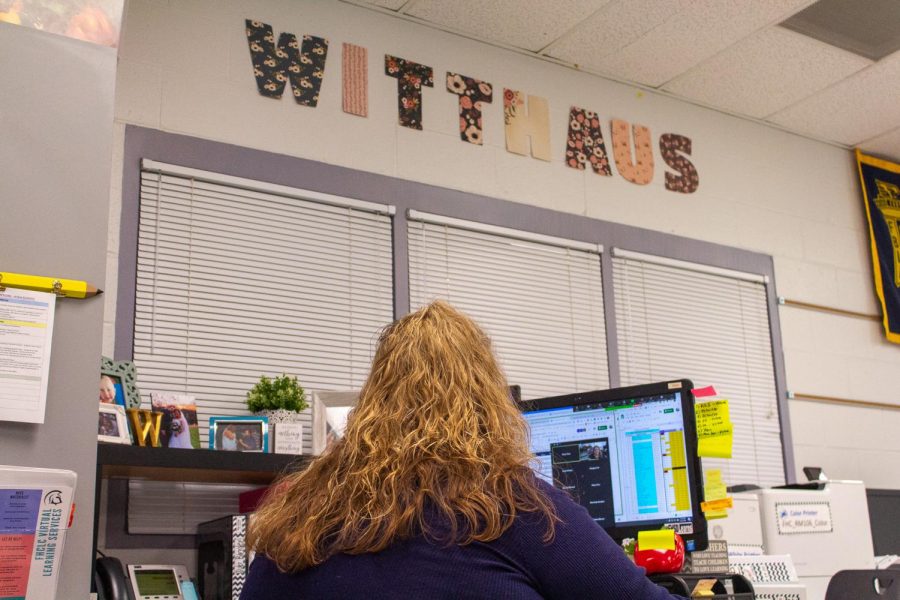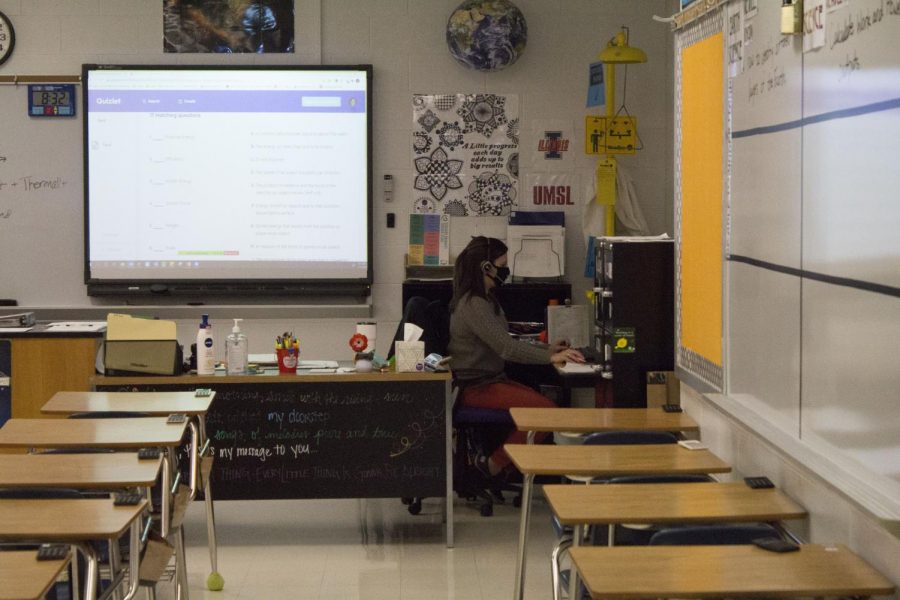Your donation will support the student journalists of Francis Howell Central High School. Your contribution will allow us to purchase equipment and cover our annual website hosting costs. FHCToday.com and our subsequent publications are dedicated to the students by the students. We hope you consider donating to allow us to continue our mission of a connected and well-informed student body.
Bridging the Virtual Divide
Online teachers serve as virtual students’ connection to the classroom
March 17, 2021
The learning approach students and teachers have known for their entire lives has suffered a critical alteration. A certain coronavirus pandemic has pressured schools across the nation and in the Francis Howell School District to adopt a safer alternative to in-person education: virtual learning. Those with a preference for contactless learning could choose to opt in for this new form. When hundreds of students from Francis Howell Central High School proceeded as virtual students, they transformed the learning lives of virtual teachers as they did their own.
Virtual teachers are still required to teach from their physical classrooms. Chilled plastic chairs scatter vacant classrooms in the absence of their students. As is the case with English teacher Melissa Fry, some virtual teachers teach exclusively virtual classes.
All the chairs in her classroom are pushed up against the wall, leaving a gap of empty white flooring in the middle of the room. In the afternoon, light trickles in from the windows, casting a soft, muted glow on the room. Mrs. Fry sits by the window in silhouette, her hands gesturing intensely as she speaks in front of the laptop.
“The most difficult aspect [of teaching virtually] for me has been not getting to see and hear most of my students on a regular basis,” Mrs. Fry said. “Many days I find myself saying, ‘Let me know I’m not talking to the void! The Zoom void!’”
In many virtual classrooms, active participation from students is lacking. Regarding the awkward barrier of the digital realm or simply negligence from the student, either can cause teachers’ attempts to make connections with students feel one-sided.
Much of science teacher PatrickReed’s solicited attempts at connection have been met in the same cold manner.
“I use a lot of humor (attempted) and personality in my instruction. While my online students profess that it comes through to them and they appreciate it … in the virtual classroom… [feedback] is so lacking,” Mr. Reed said.
English teacher Laurie Fay highlights loneliness as one of the starkest changes to the virtual classroom.
“Not having the real ‘normal’ interaction is sad to me. I thrive off of my audience, just as a comedian or a public speaker does,” Ms. Fay said.
This unresponsiveness of students has proved to be an aspect to virtual learning many virtual teachers have wrestled with. However, the rare connections that do take place between dedicated students and teachers are made that much sweeter.
FHC and its sister schools, Francis Howell High and Francis Howell North High, share a pool of virtual teachers and students. This intermixing is an aspect of virtual learning that drama teacher Cori Stallard is grateful for, as she got to collaborate with passionate students from across the district.
“[The student] participates in discussions, he is creative, and he is really interested in acting. I would have never been able to work with him had he not [been] in a virtual class with me,” Mrs. Stallard said.
For Mrs. Stallard, witnessing her students progress is the most rewarding part.
“Getting to watch their creativity and their confidence bloom has been wonderful,” Mrs.Stallard added. “I loved being surprised by what they came up with for projects.”
The online format of AP English Language is taught by Ms. Fay, who has noticed positive aspects that are unique to her virtual classrooms. The class itself helps students to practice reasoning in their writing by conducting class discussions. She was pleased to see that, while the students were eager to share their arguments, they were hesitant to talk over one another, allowing for a more coherent and peaceful conversation.
In a surprisingly short period of time, teachers have been pushed to extremes: adapting to new software, juggling virtual and in-person learning formats, maintaining confidence while lecturing to 30 silent black screens.
“It’s truly been an unforgettable experience that I will remember and learn from for the rest of my life,” Mrs. Fry said.
Despite not having a normal in-person audience, virtual teachers continue to express their passion for helping their students not only to succeed, but to leave intentional margin for personal connections to be made — ones that would have otherwise occurred in the physical classroom. With each new challenge, their steadfast resilience becomes increasingly apparent.
Caitlin Crain
“It’s hard. It’s trying. It’s one of the most difficult things I’ve done in my career. However, it is still great. I wish I had the right words to describe this incredibly unique situation,”
– Mrs. Caitlin Crain
Melissa Fry
“This semester has really pushed me to extend myself as an educator and as a human. I’ve leaned on a lot of people for help, and I’m forever grateful for their support,”
– Mrs. Melissa Fry
Laurie Fay
“I don’t require cameras to be on, so not having the real ‘normal’ interaction is sad to me. I thrive off of my audience, just as a comedian or a public speaker does,”
– Mrs. Laurie Fay
Cori Stallard
“It feels like flying a plane, with passengers, while reading the instruction manual. You are wanting to land as safely as possible, but you are in a world that is being created as you go through it. You just have to trust your gut instincts and be the pilot.”
-Mrs. Cori Stallard











